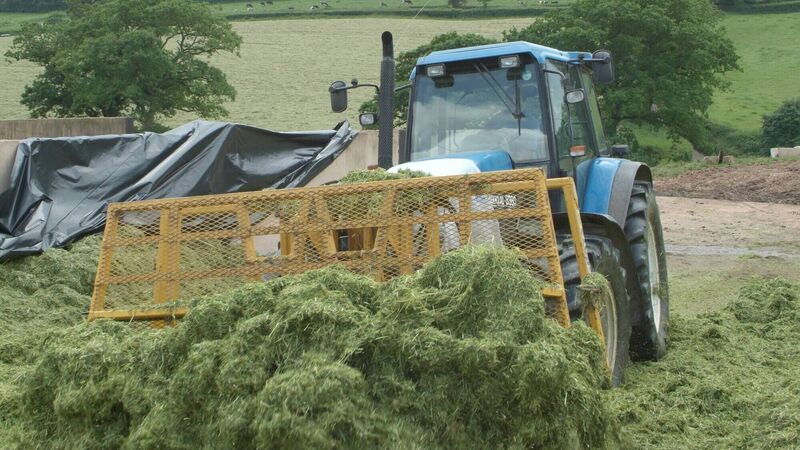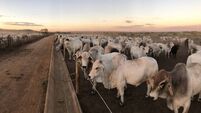Concerns around height of silage pits emerge

Silage pit heights are causing concern; farmers and contractors are being advised to plan and agree safe operating proceducres. File Picture.
The Association of Farm and Forestry Contractors (FCI) and the Health and Safety Authority (HSA) have issued a joint statement on safety issues around the height of silage pits after it emerged that some farmers were filling pits to excessive and potentially dangerous heights, putting vehicle operators and workers on the pits at risk of serious injury.
Michael Moroney, CE FCI, who spoke to the Irish Examiner on Wednesday, said the situation was particularly hazardous because of high moisture content in the grass which is making it more susceptible to pit splitting.
“With the wet weather and the heat that has come into them, crops are 30% heavier than this time last year,” he added.
“There is a lot more diesel being used because heavier grass means more loads being drawn into the silage pits.
“Some farmers have been using a dribble bar system for slurry which means there has been less nitrogen lost but they haven’t compensated for that with their bag nitrogen so some of the silage coming in has a high level of nitrogen which is evidenced by its colour and consistency.
“The lesson from that is to reduce the nitrogen or certainly manage it more carefully because the nitrogen uptake within the slurry is far better than it would have been otherwise.
Mr Moroney says that while a lot of work has been done by contractors over the past week due to good weather conditions, “there is a lot of work still to be done”.
“We were two to three weeks behind because of the weather but the fact now that the grass has become so heavy its making it more difficult to catch up,” he continued.
“Most contractors have a very good relationship with their farmer clients; they know the importance of silage quality and will make sure that the silage comes in, in the best possible condition given the difficult circumstances.”
Meanwhile, FCI and the HSA are advising farmers and contractors to plan and agree on safe operating procedures and safe pit heights specific to their farm, before harvesting begins.
General rules include:
- The height of the silage being rolled should never be more than double the height of the retaining walls;
- The silage should slope at less than 45° degrees to retaining walls and the loading face of the pit when being filled;
- Where a clamp is being built with no retaining walls, the side slopes of the clamp should also be kept at less than 45° degrees;
- The working width for rolling the silage across the top, of any clamp or pit, should be at least three times the full tyre width of the loading/pit rolling machine;
- Operators must ensure the stability and safe operation of the rolling equipment to prevent loss of control or overturns;
- Where pits are full and more silage harvesting is required, baled silage should be considered;
- The silage storage capacity on all farms should be assessed to ensure the matching of facilities to stocking levels.










